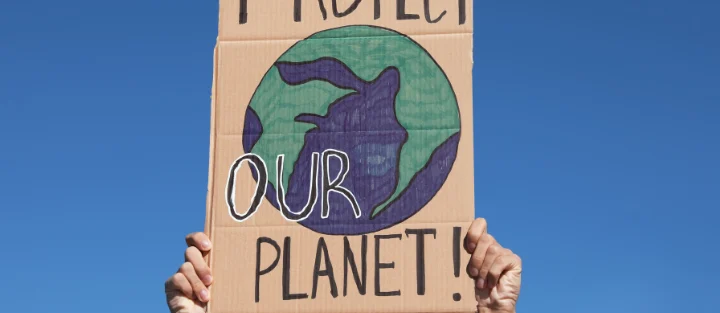In recent years, the conversation around climate change has shifted from abstract warnings to a harsh reality as communities across the globe face the increasing impact of natural disasters. One of the most recent and devastating examples is Hurricane Helen, which ravaged parts of North Carolina and the southeastern United States. This catastrophic event served as a chilling reminder that as our planet warms, the intensity and frequency of natural disasters are on the rise. Hurricane Helen: A Tragic Case Study Hurricane Helen made landfall in North Carolina in late September, leaving a trail of destruction in its wake. With wind speeds exceeding 140 mph and some areas receiving more than 30 inches of rain, it was one of the most intense storms in the region’s history. Entire neighborhoods were submerged, millions were left without power, and the financial toll is estimated to be in the billions. What’s most alarming is that storms like Helen are becoming more common. According to the National Oceanic and Atmospheric Administration (NOAA), the number of Category 4 and 5 hurricanes has nearly doubled over the past four decades. Climate change plays a significant role in this escalation, as warmer ocean temperatures and increased atmospheric moisture create the ideal conditions for more powerful hurricanes (Northeastern Global News) (Texas A&M Today). The Science Behind Climate Change and Natural Disasters Climate change is driven by the accumulation of greenhouse gases in the atmosphere, primarily from the burning of fossil fuels. This leads to higher global temperatures, which in turn affect weather patterns and the frequency of natural disasters. Hurricanes, wildfires, floods, and droughts are all becoming more severe as a result of these changes. For hurricanes, the science is clear: warmer ocean temperatures fuel stronger storms. When ocean water warms, it evaporates more quickly, adding moisture to the atmosphere. This additional moisture supercharges storms, leading to heavier rainfall and stronger winds. Hurricane Helen, for instance, dumped 20-30% more rain than it would have in a pre-industrial climate, exacerbating the flooding and damage in its path (Northeastern Global News). In addition to the immediate destruction caused by storms like Helen, climate change is also leading to slower-moving hurricanes. This phenomenon, known as “stalling,” allows storms to linger over one area for a longer period, causing even more damage. Hurricane Harvey, which hit Texas in 2017, is another example of this trend, as the storm hovered over Houston for days, leading to unprecedented flooding. A Global Wake-Up Call While Hurricane Helen’s destruction was concentrated in the southeastern United States, the impact of climate change is being felt worldwide. In Europe, severe heatwaves have become more frequent, leading to wildfires and crop failures. In Asia, rising sea levels are threatening coastal cities like Bangkok and Jakarta, while in Australia, extended droughts have led to devastating bushfires. The Intergovernmental Panel on Climate Change (IPCC) has warned that if global temperatures continue to rise at the current rate, we can expect more frequent and severe natural disasters. The IPCC’s latest report suggests that we have a narrow window of time to act, urging governments, businesses, and individuals to reduce carbon emissions and transition to cleaner energy sources (Northeastern Global News) (Texas A&M Today). What You Can Do to Help While climate change is a global issue, there are steps you can take to help mitigate its effects and protect yourself from natural disasters. Here are a few actionable steps:Stay informed: Follow the latest developments in climate science and disaster preparedness. Organizations like the IPCC and NOAA offer valuable resources on climate change’s impact and what individuals can do to make a difference. Reduce your carbon footprint: Simple actions like driving less, conserving energy, and eating a more plant-based diet can help reduce the amount of greenhouse gases you contribute to the atmosphere. Invest in flood protection: If you live in an area prone to flooding or hurricanes, investing in home protection like flood insurance is essential. Many homeowners underestimate the risks of flooding, but as storms become more severe, it’s important to ensure your property is covered. Support sustainable practices: Advocate for policies and practices that support renewable energy, waste reduction, and reforestation. Collectively, we can push for systemic change that will help slow the effects of climate change. Educational Resources There are numerous educational resources available to help you stay informed about climate change and natural disasters. Some of the most reputable include:NASA’s Climate Change and Global Warming page: An excellent resource for understanding the science behind climate change and its effects on the planet. IPCC’s website: Offers in-depth reports and summaries of climate data, as well as recommendations for policy and action. World Meteorological Organization (WMO): Provides information on global weather patterns, including the impact of climate change on extreme weather events. _ The increasing frequency of natural disasters like Hurricane Helen makes it clear that the time for action is now. Climate change is no longer a distant threat; it’s a reality that affects us all. By staying informed, reducing our carbon footprint, and supporting sustainable initiatives, we can help mitigate its effects. Furthermore, by ensuring we have the right insurance in place, like flood protection, we can safeguard ourselves and our families against the growing risks associated with natural disasters.
[wpcode id="4722"]











